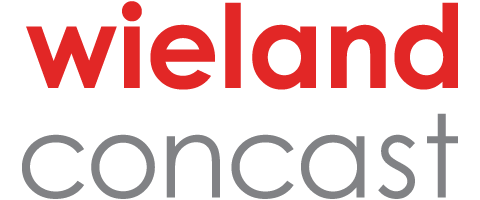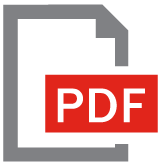The term "wrought mill products" applies to a series of copper bronze alloys that are first cast and then ready to be reworked by the rolling, drawing, extruding or forging processes. Each of these products starts with metal that has been cast into a form or shape that is suitable for further transforming into a specific product.
Leaded commercial bronze
This alloy family is a free machining brass with a higher electrical and thermal conductivity than that of standard free-machining brass. C31400 and C31600 both have natural corrosion resistance combined with the machinability typical of leaded brasses as well as good cold workability.
C31400
C31600
Phosphor bronze
Phosphor bronze is an alloy of copper containing 0.5–11% tin and 0.01-0.35% phosphorus. The tin increases the corrosion resistance and strength of the alloy. The phosphorus increases the wear resistance and stiffness of the alloy. These alloys are notable for their toughness, strength, low coefficient of friction, and fine grain.
C51000
C52100
C53400
C54400
Aluminum bronze
Aluminum bronzes are used for their combination of high strength, excellent corrosion and wear resistance. Aluminum bronze alloys typically contain 9-12% aluminum and up to 6% iron and nickel. alloys in these composition limits are hardened by a combination of solid solution strengthening, cold work, and precipitation of an iron rich phase.
C62400
AMS 4640-C63000
AMS 4590-C63020
AMS 4634-C64200
C64210
Low-silicon bronze
C65100 is an engineering alloy at least as resistant to corrosion as copper itself, but much stronger, and with good fatigue endurance. It is recognized for its brazeability, strength, corrosion resistance, and electrical properties. C65100 is also one of the most weldable copper alloys.
C65100
Manganese bronze
Manganese bronzes are the strongest and one of the most wear resistant alloys with high tensile strength, high yield strength, hardness and ductility similar to steel. In addition to their excellent mechanical properties, manganese bronzes are also corrosion resistant. Manganese bronze alloys are also typically known for their high impact resistance and excellent machinability.
C67300
C67400
C67410
C67600
Copper nickel-tin bronze
Copper nickel-tin bronzes are an excellent alternative to nickel alloys, aluminum bronzes, and beryllium copper. C729, a copper nickel-tin (CuNiSn) bronze is available, standard stocked, in AMS 4596, AMS 4597, and AMS 4598 specifications. It resists mechanical wear, galling, stress relaxation, corrosion and erosion. It is non-magnetic and easy to machine into complex components. In addition, it is environmentally friendly, being lead and beryllium free, thus making it a beryllium copper substitute alloy. Wieland Concast is the exclusive distributor of Hardiall® (C72900) produced by Lebronze alloys.
AMS 4596-C72900
AMS 4597-C72900
AMS 4597-C72900
Benefits of extruded or cast and drawn products
Cold drawing of copper and copper alloys increases the strength, hardness and stiffness, while at the same time reduces the ductility of the material.
Improved size and consistency
Reduces machining losses
Dimensional consistency within each bar
Dimensional consistency from bar to bar
Tighter size and section tolerances
Improved surface finish
Increased mechanical properties
Improved machinability and productivity
Other extruded or cast and drawn products downloads





 Product list
Product list








